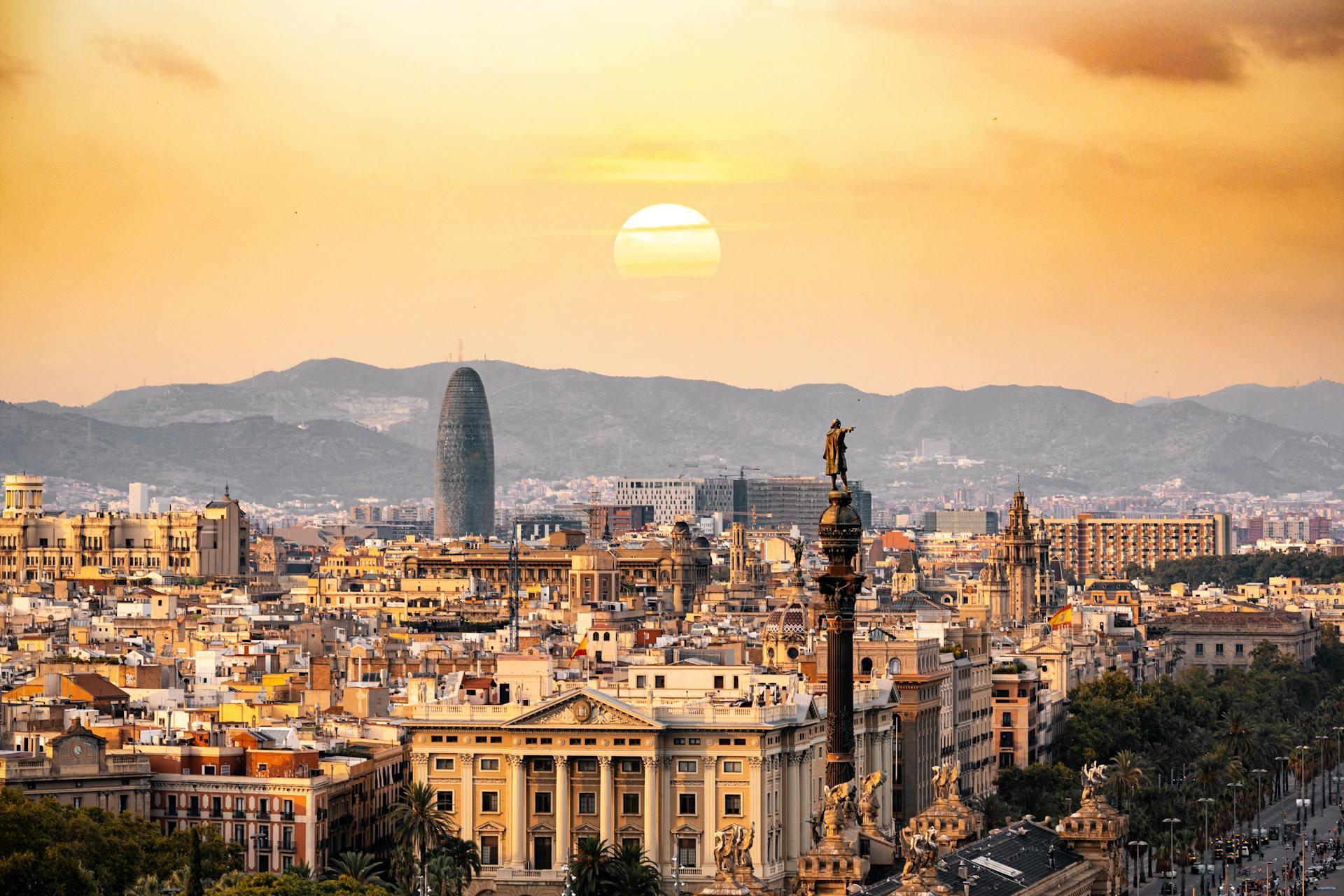The two biggest Iberian languages are Spanish and Portuguese. Naturally, these two often draw comparisons from people trying to ascertain exactly how similar they are.
This is probably due to the fact that they developed at similar times and under similar circumstances, and because they became the two primary languages during the Age of Discovery. In fact, the explorations abroad by Spain and Portugal from the end of the 15th century, and the colonial legacy that followed, has lead to the Spanish language and the Portuguese language being the two dominant tongues in Central and South America today. Even a brief introduction to Spanish or to Portuguese shows that there are differences.
At a glance, here are some of the key differences between the languages, we go into more detail about the differences below:
| Spanish | Portuguese | |
|---|---|---|
| Origins | Derived mainly from Latin, influenced by Arabic and other Romance languages. | Also Latin-based, with significant Celtic, Arabic, and Germanic influences. |
| Pronunciation | Generally smoother and more syllable-based. Pronounced vowels are more consistent. | Features more nasal sounds, varied vowel pronunciation, and some closed-mouth consonants. |
| Vocabulary | Many Latin-based words; some shared with Portuguese but differing meanings or usage. | Shares Latin roots with Spanish, but includes unique terms from Lusitanian and African origins. |
| Verb Conjugations | Typically less complex; fewer irregular verbs. | More irregular verbs and complex conjugations, especially in the subjunctive mood. |
| Spelling | Phonetic, closely aligned with pronunciation. | Spelling often diverges from pronunciation, especially with silent letters and nasal tones. |
| Definite Articles | Uses "el, la, los, las" to agree with noun gender and number. | Uses "o, a, os, as," also agreeing with gender and number but pronounced distinctly. |
| Plural Forms | Pluralized nouns usually end in -s (e.g., libros). | Often ends in -s but can have more irregular forms, especially with nasal endings (mãos). |
| Pronoun Placement | Clitics (e.g., object pronouns) usually placed before the verb. | Clitics often placed after the verb, creating enclitics (e.g., amar-te instead of te amo). |
| Accents and Diacritics | Utilizes accents to denote stress or distinguish words (e.g., tú vs. tu). | Uses diacritics more extensively to indicate pronunciation (e.g., ação, língua). |
| Global Speakers | Widely spoken across Latin America and Spain, with some African communities. | Predominantly spoken in Brazil, Portugal, and parts of Africa (e.g., Angola, Mozambique). |

The History of Spanish and Portuguese
The geography of the Iberian peninsula where we find modern day Portugal and Spain, meant that the Portuguese and Spanish developed hand-in-hand, and in relative isolation. This is the most western expansive of mainland Europe, separated from the rest of the continent by the Pyrenees mountains where the Spanish-French border is located (as well as the tiny principality of Andorra), and surrounded on all sides (apart from the small northern mountainous connection to France) by sea.
As a consequence, the change in linguistics over more than a thousand years was an insular process which affected the peninsula as a whole.
The history of Spanish, and of Portuguese, starts with the Romans bringing Latin to the peninsula when they conquered it in the 3rd century BC. Latin was the dominant language there for around 600 years, but during this time the language itself evolved and changed.
Different versions of Latin were emerging across the Roman empire, and people on the street began to move away from classical Latin that was spoken in an official capacity, towards a colloquial version known as vulgar Latin.
As the Roman empire declined, the Iberian peninsula was subject to a number of Germanic invasions. The new rules were Gothic speakers, which didn't really catch on in the area, but parts of the language did start to mix with the vulgar Latin being spoken there. But it was the next invasion by the Arabic-speaking Moors from North Africa that saw Portuguese and Spanish start to become recognisable.
The Kingdom of Asturias in northern Spain was able to repel the Moors advances, and began to expand itself in the 9th and 10th centuries AD. It became the epicentre of the Reconquista retaking of the Iberian peninsula from the Muslim powers in the 11th and 12th centuries.
The Kingdom of Asturias eventually began to break down into smaller states, the two main ones being the County of Portugal and the Kingdom of León. The County of Portugal expanded down the western coast of the Iberian peninsula, and the Kingdom of León expanded through central areas.
By this point, vulgar Latin had evolved in unique, but different ways in both of these places, and their establishment as independent states ensured that they continued to do so because they were no longer subject to powers ruling over them and imposing their own language on their territories.
Their ability to remain independent, and finally defeat the Moors, allowed them to individually standardise their languages giving us the Spanish and Portuguese that we have today.

Other dialects that came from vulgar Latin at this time became marginalised as Spanish and Portuguese exerted their dominance over the Iberian peninsula. Some of these languages do still exist in certain areas, but they are spoken by very few people. These include Aragonese, Leonese, and Navarrese.
Other dialects that came from vulgar Latin at this time became marginalised as Spanish and Portuguese exerted their dominance over the Iberian peninsula. Some of these languages do still exist in certain areas, but they are spoken by very few people. These include Aragonese, Leonese, and Navarrese.
Galician and Catalan are perhaps two languages that came from vulgar Latin, that are most widely spoken. Although primarily spoken in regions of Spain, it is believed that they actually share more commonalities with Portuguese than they do Spanish. Particularly the differences between Catalan and Spanish come as a shock to people who assume they are almost the same language.
Is Portuguese Like Spanish?: The Similarities
So, we have seen how Portuguese and Spanish developed on the Iberian peninsula over the course of almost 2,000 years, and we have established that each is a foreign language in its own right, but how similar are the two languages that we have today?
Linguistic Similarities
The shared roots of the two languages mean that there share some very similar vocabulary (although the pronunciation differs, such as:
- Policía (Spanish) / Polícia (Portuguese) - Police
- Señora (Spanish) / Senhora (Portuguese) - Mrs
- Año (Spanish) / Ano (Portuguese) - Year
- País (Spanish) / País (Portuguese) - Country
- Pequeño (Spanish) /Pequeno (Portuguese) - Small
Both languages also have similar features in their grammar, such as having two different verbs for to be that are even spelt the same way; ser/estar. These verbs are both used in the same way, so estar is used for states of being that can change (such as moods), whereas ser is used for facts or permanent states.
They both also have male and female nouns, and the adjectives describing them change depending on the gender of the noun in question.
Studying both languages will show you that adverbs are constructed from adjectives in the same way. This is done by adding -mente to the feminine version of the adjective. For example, natural (natural) becomes naturalmente (naturally), and claro (clear), becomes claramente (clearly).
As you increase your proficiency, you will notice that both Spanish and Portuguese use the reflexive form of the verb to express the passive voice, and both use the subjunctive in similar ways with the word que often being used to introduce it. However, don't worry too much about these last two examples. They are things that you will need to get your head around as you approach fluency thanks to your Spanish lessons, not as you start out as a new learner with basic language skills.
Geographical Similarities
Aside from the similarities in the languages themselves, Spanish speaking and Portuguese speaking countries can be found in roughly the same parts of the world. The best example of this is dominance of Spanish and Portuguese in Latin American countries. The majority of countries in Central and South America speak Spanish, but the biggest and most populous country, Brazil, speaks Portuguese.

Portuguese is spoken in more countries in Africa, but both languages are spoken in Equatorial Guinea and are official languages at the African Union. What's more, there are some communities in Portuguese-speaking Angola who speak Spanish due to Cuban influence during the Cold War.

Differences Between Spanish and Portuguese
For all of the apparent similarities, you can't become fluent in one and expect to easily be able to communicate with a native speaker of the other. For starters, both languages differ considerably depending on where you are in the world.
For example, there are notable differences between Portuguese in Portugal and that of Brazil, and Spanish changes in terms of vocabulary and there are different accents across in the Spanish language across Latin America, and of course in Spain.
In fact, learning any second language, whether it is an undergraduate course at university, or one of a number of language courses at a language school, will require you to study the differences in that language in various parts of the world.
Pronunciation
The similarities in the written forms of Spanish and Portuguese evaporate when it comes to the pronunciation. Apart from "ll" being a "y" sound, "j" being more like the English "h", and "h" being silent, you pronounce pretty much every Spanish word how it is written.
Portuguese isn't the same. Phonetically, it is more like French than Spanish and therefore not every letter is pronounced in the same way that it is in Spanish.
In fact, Portuguese has more phonemes than Spanish and therefore it is sometimes more difficult for a Spanish speaker to understand a Portuguese speaker than it is the other way around. This is because there is a wider variety of ways to pronounce words in Portuguese than there is in Spanish. For example, whereas Spanish has 5 vowel sounds, Portuguese has between 7 and 9.
Explore the vibrant world of Hispanic cuisine and traditions through immersive Spanish lessons.
False Friends
There are plenty of words found in both Spanish and Portuguese, which are spelt the same and have exactly the same meaning. This is great if you want to learn both languages as it makes your job a lot easier, but be aware that there are also plenty of words that are spelt the same, or very similarly, but have very different meanings. For example:
- Aceite - Oil (Spanish) / Admitted, accepted (Portuguese)
- Acordar - Remember, agree (Spanish) / Wake up (Portuguese)
- Cena - Dinner (Spanish) / Scene (Portuguese)
- Fechar - Date (Spanish) / Close (Portuguese)
- Latido - Heartbeat (Spanish) / Barking (Portuguese)
- Logro - Success (Spanish) / Deception (Portuguese)
- Solo - Alone (Spanish) / Ground (Portuguese)
So don't always assume that because a word means one thing in Spanish, it means the same in Portuguese, or vice-versa!
Why Learn Spanish
The Spanish language is spoken by an estimated 440 million native speakers, and it is an official language in 20 different countries in Europe, Central America, South America, the Caribbean, and Africa including:
- Argentina
- Colombia
- Costa Rica
- Cuba
- Equatorial Guinea
- Guatemala
- Mexico
- Panama
- Spain
It is also an official language used by a number of different international organisations, including the United Nations, the European Union, the African Union, and the World Trade Organization.
Spanish has been blessed with a number of important thinkers, who have given the Spanish language some interesting quotes.
For Work and Study
The widespread use of Spanish means that learning the language of Miguel de Cervantes could improve your career prospects by making you more valuable to an employer that deals with an Hispanic country, business, or organisation. The number of countries where Spanish is spoken gives you a number of opportunities if you want to study abroad, or if you want to live and experience a different culture.
For Cultural Reasons
Each Spanish speaking country has its own unique and distinct culture. Learning Spanish can you teach about the language and culture of each one. Spanish speaking music has been made world famous by artists such as Shakira, Enrique Iglesias, and Jennifer Lopez. Doing even a semester in Spanish could teach you to understand their lyrics more, as well as opening your musical tastes such as salsa, vallenato, and reggaeton.

The Spanish language and culture are closely linked, and you could learn to appreciate another level to traditional Spanish food such as tapas, paella, gazpacho, and jamón ibérico, or the art of Pablo Picasso, Salvador Dali, or Francisco Goya, by learning the Spanish language.
What's more, the remnants of a number of different civilisations can be found in Spanish speaking countries. The Spanish largely wiped these civilisations out, but you can still visit their archaeological sites and learn about their histories. These include:
- The Mayans in southern Mexico, Guatemala, Belize, and western parts of Honduras and El Salvador
- The Aztecs in central and northern Mexico
- The Incas in parts of Peru, Ecuador, Bolivia, Chile, and Argentina
For Travel Reasons
Spanish speaking countries boast some of the worlds best beaches, tallest mountains, largest rainforests, and most spectacular cities and cultures. But you'll need to learn beginners Spanish before travelling in order to get the most out of your trip!
Why Learn Portuguese
Portuguese is another language that has a wide geographic spread. Although it is spoken by less people than Spanish (Portuguese has 220 million native speakers), it actually reaches more continents as it is used as an official language in countries on 4 continents compared to Spanish's 3. Portuguese is spoken in:
- Angola
- Brazil
- Cape Verde
- East Timor
- Equatorial Guinea
- Guinea-Bissau
- Mozambique
- Portugal
- São Tomé and Príncipe
In doing so, Portuguese ranks fifth on the list of languages by number of countries using it in an official capacity.
Stand Out from the Crowd
Speaking Portuguese will make you stand out from the crowd. There are currently less people who speak Portuguese as a second language than other European languages such as French, German, and Spanish.
By speaking Portuguese, you will be more in demand than speakers of these other languages because you will be competing against less people with the same skill set. Portuguese speakers are highly sought after in a number of different fields, including tourism, economics, and business to name a few.
The growth of Brazil (which we will look at next) also makes speaking Portuguese an excellent ability to have, and when you consider that UNESCO estimates Portuguese speakers to rise to 335 million by 2050, it is definitely a language for today, and for tomorrow.
The Power of Brazil
As we have just eluded to, Brazil is a giant. Not just in terms of its size (5th largest by area) or population (Brazil is the 5th largest country in the world with 210 million people), but the Brazilian economy is one of the most powerful in the world.
As the world's 8th largest economy, it was one of the fast growing on the planet in the first decade of the 2000s, so much so that both imports and exports increased by around 300% each during this time.

The power of Brazil is clear. It has the eighth highest number of billionaires in US dollars of any country in the world according the the Forbes rich list, and its status as the biggest economy in Latin America has seen it assume a prominent place in organisations such as Mercosur, the G8+5, the WTO, and many more.
Tourism is also popular with Brazil being known for its stunning beaches and incredible cities.
All of this coupled with the huge and growing market that it offers, means that countries around the world are clambering to do trade deals with Brazil. As a Portuguese speaker, you would be an asset for a wide range of companies and organisations looking to tap into this emerging economy.
For Travel as Well
As you can see from the list above, Portuguese is spoken far and wide. There are countries all over the world offering a wide range of different cultural experiences and climates.
We have already discusses the economic power of Brazil, but the draw for tourists is large as well. Brazil has beautiful beaches, the Amazon rainforest, and one of the planet's most spectacular waterfalls in Iguazu Falls. This is not to mention the allure of Rio de Janeiro which its world famous Copacabana beach, Christ the Redeemer statue, and Sugar Loaf mountain.
Portugal is another country that has excellent beaches. In Lisbon and Porto, it also has two cities that are packed with history, culture, and sights to see. But moving past Portugal and Brazil, countries such as São Tomé and Príncipe are rapidly growing their tourist industries, meaning that such places could be high on people's lists in years to come.
Should You Learn Spanish or Portuguese?
As you can see, there are great reasons to learn both of these diverse languages. They are both widely spoken, and hold an important place in the world that we live in today.
The advantages of both languages include:
- Widely spoken (spoken by a combined total of 660 million native speakers)
- Useful for international travel (28 countries use these two languages in an official capacity)
- Good for increasing your career prospects
- Excellent opportunity for learning about new cultures
- Two of the easiest languages to learn for English speakers
The decision of which one to learn is your call - there is no right or wrong answer, and both would be an undeniable asset to you. It will largely depend on your personal circumstances, and how you plan to use the language that you choose. This will ultimately dictate which one will be of more use to you.
Portuguese, spoken by over 250 million people including in Brazil, Portugal and parts of Africa like Angola and Mozambique. With a relatively consistent phonetic system, Portuguese is accessible for learners.
With over 500 million native speakers, Spanish is the second most spoken language globally and an official language in 20 countries. It’s ideal for travel, business, and cultural connections across the Americas and Europe.
As we have shown, Spanish and Portuguese share the same roots, and as such there is a little bit of cross over between the two.
So, what should be noted is that learning one, could help you learn the other. So why stop at just one of them? Why not go for it and learn them both!
Check out our Spanish lessons London and across the country!
















It is a win-win no matter which language you learn first. With all due respect Jon, there is not only a ‘little overlap’ between Portuguese and Spanish, there is in fact ‘much overlap’ between them, to the tune of a 89% similarity in grammar, vocabulary and sentence structure. Educated speakers of both can actually have a highly mutually intelligible conversation with one an other in their own respective language. This is not the case between any other Romance language pair. Apart from the basics and a similar accent, Italian is actually quit distinct from Spanish, as such, Spanish and Italian are not mutually intelligible, contrary to what some people believe.
If you learn Portuguese you will manage Spanish, the opposite does not work. If you try to speak Portuguese to someone that speaks Spanish they understand almost nothing. If you speak Portuguese, you will understand more than 80% of someone speaking Spanish. This is a fact. And a quick note, there is no such thing that Portuguese from Portugal is different from Portuguese spoken in Brazil. Is like English from the US versus English from the UK, is just the accent and some uncommon words. I am German and learned Portuguese, no issues to understand any spoken Portuguese (Brazil or Portugal). North of Brazil and Rio de Janeiro have a huge accent, which is different from São Paulo (which is more clear to foreigners) and the South region of Brazil. Learn Portuguese and get Spanish for free.
Linguistic history not entirely accurate. Also you’d think a site named “superprof” would know the correct adjective to use with countable (fewer) versus non-countable (less) nouns. “People” is a countable noun, so the correct adjective is “fewer” not “less” (e.g., “By speaking Portuguese, you will be more in demand …because you will be competing against less people with the same skill set.”) I’d be wary of relying on a website that violates such basic rule of English grammar.